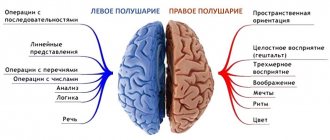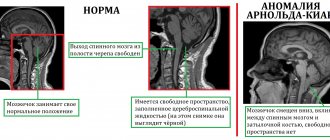In this article we will tell you:
- Types of nystagmus
- Physiological nystagmus
- Pathological nystagmus
- Reasons for the development of nystagmus
- Symptoms of nystagmus
- Prevention and treatment of ocular nystagmus
The human eyeball is in constant motion. We can squint, raise up, or, conversely, lower our eyes at any time. Such movements are voluntary - that is, they depend on our desire, on those impulses that the brain transmits to the muscles at the behest of our consciousness.
However, there are also movements that occur involuntarily. Some of them are considered normal, part of a reflex, and do not interfere with us in everyday life. Others are pathological in nature and indicate the development of a particular disease. A clear illustration of these processes is nystagmus of the eyeball - repeatedly repeated oscillatory movements of the human eyes, which can be either a sign of illness or an absolutely normal phenomenon.
The name "nystagmus" comes from the ancient Greek word νυσταγμός - drowsiness
. This is explained by the fact that in a dream the eyes also make involuntary movements.
This pathology is quite common: for example, according to statistics, congenital nystagmus is diagnosed in 20-40% of children with poor vision.
About physiological and pathological visual nystagmus, factors of its development, types, symptoms, signs of nystagmus and treatment methods - in our article.
Types of nystagmus
Experts distinguish physiological and pathological types of nystagmus.
Physiological nystagmus
A variant of the norm, the body’s response to a change in head position or external stimuli. Eye movement during physiological nystagmus is caused by reflexes.
Physiological nystagmus is divided into vestibular (labyrinthine) and optokinetic. As the name implies, vestibular nystagmus of the pupils appears due to irritation of the human vestibular apparatus: exposure to the structures of the labyrinth with current, low or high temperatures, as well as during rotation of the body along the vertical axis. In addition, the labyrinthine type of nystagmus can occur if a person looks away to the side as far as possible: the eye muscles quickly tire, causing characteristic twitching.
Optokinetic nystagmus occurs when a person watches objects moving in one direction at a constant speed. With such observation, the gaze is directed most of the time in the direction of movement, but sometimes it “jumps” to the opposite direction.
Pathological nystagmus
Pathological nystagmus is a sign of the development of a particular disease. It can be congenital or acquired.
Congenital nystagmus appears soon after the baby is born. Acquired - during life due to exposure to various pathological factors on the body. Acquired nystagmus is usually divided into vestibular and neurogenic, depending on the lesions in which area it is caused.
If we talk about differences in the direction of movements, we can distinguish vertical, horizontal and rotatory types of pathological nystagmus. With vertical, the eyeballs move up and down, with horizontal - along the sides, with rotatory - in a circle and diagonally. The most common of these is horizontal nystagmus (up to 18% of the total number of cases). The rarest ones are oblique and circular.
Directions of eyeball movement during nystagmus
According to clinical manifestations, pathological nystagmus is divided into:
- jerky. Eye movements with this type resemble rhythmic jolts, and if the eye moves quickly in the direction of the jolt, then in the opposite direction it moves more slowly. Push-like nystagmus can be left- or right-sided, depending on which direction the push is directed.
- pendulum-shaped. The eyeballs move like a pendulum, as if swinging in one direction or the other.
- mixed. This type of nystagmus combines both jerking and pendulum movements.
- associated. Characterized by coordinated movement of the eyeballs.
- dissociated - when the eyes move uncoordinated, not matching in direction and amplitude.
In addition, nystagmus can be installational - when there are short, insignificant amplitude twitches of the apples when looking to the side (the reason for this is most often a failure in muscle coordination), and spontaneous, which is characterized by longer, more pronounced “jumps”.
Diagnostics
Correct treatment can be prescribed only after a complete examination of the patient. Diagnosis includes an external examination of the patient. The doctor notices involuntary eye movements and asks you to focus your vision on a specific object (moving it in different directions). Doctors of other specialties are involved, and a number of examinations are carried out:
- visometry is a technique that allows you to assess visual acuity;
- refractometry is a method for determining the refraction of the eye (the refraction of light rays, affecting visual acuity and the clarity of visualization of the contours of objects);
- microperimetry - the integrated use of computer determination of visual fields and examination of the retina, allows one to evaluate the sensitivity of the retina and the effectiveness of treatment for nystagmus;
- Electronystagmography is a method of recording and recording involuntary movements of the eyeballs;
- electroencephalogram - a study of the electrical activity of the brain;
- echoencephalography – study of cerebral vessels and brain structures using ultrasound;
- optical coherence tomography of the fundus of the eye - an innovative ophthalmological study that allows you to study the surface and deep structures of the visual organs;
- computed tomography of the brain - used to diagnose pathological neoplasms or signs of displacement of brain structures.
The amplitude of eyeball movements during nystagmus indicates the cause of the pathology. The predominance of unidirectional horizontal nystagmus indicates damage to the central nervous system or labyrinth (purulent labyrinthitis, temporal bone fissure). Spontaneous movements in one eye indicate damage to the oculomotor nerve. The doctor can make a final diagnosis only on the basis of the diagnostics performed. Self-examination and self-medication are unacceptable, since treatment started at the wrong time contributes to the development of serious complications.
Reasons for the development of nystagmus
Anomalies of intrauterine development, trauma during childbirth, disorders - including genetic ones - of visual acuity, transparency of the media of the eyeball, changes in the fundus, pathological processes in the optic nerve, retinal dystrophy, albinism can cause congenital nystagmus.
The causes of acquired nystagmus include:
- brain diseases (oncological formations, strokes, multiple sclerosis);
- malfunctions of the vestibular apparatus;
- poisoning, intoxication (medicinal, narcotic, alcohol);
- head injuries (with damage to the occipital region, optic nerves);
- refractive errors (myopia, farsightedness);
- strabismus;
- diseases with impaired media transparency (mature cataract, etc.).
Treatment
Depending on the severity of symptoms and the form of the disease, the doctor prescribes treatment. Both conservative therapy and surgical intervention are used. The main goal of therapy is to eliminate the disease that caused the development of nystagmus, so treatment is always comprehensive. If the cause of nystagmus is a dysfunction of the vestibular apparatus, the patient receives anticonvulsant and antiepileptic drugs. Therapy should begin with the first signs of the disease in childhood, since in adult patients treatment may no longer be effective.
Therapy is used with glasses or contact lenses. Doctors consider it preferable to use contact lenses, since they move along with the center of the pupil. As a result, visual function is preserved. For albinism, special glasses with light filters are prescribed to achieve maximum vision improvement. The following treatment methods are used in combination:
- reflexology (impact on active points);
- special gymnastics for the eyes;
- Botox injections (have a temporary effect);
- vasodilator drugs;
- complex vitamins (have a general strengthening effect on the body).
The goal of surgical treatment is to create relative peace of the eyes by restoring the correct position of the visual organ. With this operation, the extraocular muscles are weakened or strengthened. Thanks to this, nystagmus decreases, the position of the head straightens, lost vision is partially restored, and photophobia disappears. One of the methods of surgical treatment is keratoplasty - transplantation of a donor cornea instead of damaged tissue.
Symptoms of nystagmus
In addition to a general decrease in visual acuity, patients with pathological nystagmus complain of:
- the feeling that the world around you is moving;
- difficulty fixing the gaze on the object in question, a feeling of trembling, image displacement;
- the appearance of neutral zones. Neutral zones are head positions in which eye movements are not so intense. Often a person begins to hold his head in a certain position so as not to feel the “jumping” so much.
Symptoms worsen under stress and fatigue.
Symptoms (signs)
Most often, symptoms of nystagmus appear in childhood or immediately after birth. The patient cannot focus on a specific object. In adults, symptoms are most pronounced under stressful conditions. The main signs of the disease include:
- shifting eyes (pupil trembling);
- distant look;
- unnatural behavior (restlessness, anxiety);
- bending and frequent turns of the head;
- impaired body coordination, unsteady gait;
- repeated vomiting.
Note. Children with this diagnosis fall asleep worse and are more often capricious. If nystagmus is left untreated, symptoms worsen over time, leading to serious complications, especially in children. Therefore, at the first symptoms of the disease, you must see a doctor.
Treatment of nystagmus
Due to the fact that it is not possible to completely cure the disease, treatment is aimed at reducing the progression of the disease and improving visual functions. The treatment regimen is based on therapy of the underlying disease that provoked the appearance of nystagmus. To improve visual functions, vision correction is performed. Contact lenses and glasses are used for myopia and farsightedness. Correcting astigmatism has a very significant effect on inhibiting further progression of the pathological process.
Vitamin therapy, drugs that support the immune system and vasodilators are used. For special indications, surgery is performed to correct the oculomotor system to reduce eye fluctuations.
Why is nystagmus dangerous?
Nystagmus is almost always combined with organic, or irreversible, changes in the visual system (partial atrophy of the optic nerve, dystrophic changes in the fundus) and functional, or reversible, disorders. The latter develop against the background of concomitant pathology - farsightedness, astigmatism, myopia or strabismus.
With nystagmus, a blurred, unclear image is formed in the fundus of the eye, to which is added the constant movement of the eyeballs and image displacement. As a result, an unclear picture is transmitted to the higher parts of the central nervous system, so the visual cells of the cerebral cortex do not develop enough and visual acuity decreases, amblyopia develops - an insidious complication that can lead to blindness, since the worse-seeing eye is gradually turned off from the visual process.
To all of the above, you can add psychological discomfort and restrictions in choosing a future profession.
Congenital
Congenital nystagmus occurs when there is a disorder of the oculomotor system, when unfavorable factors have a negative impact on the child due to a genetic disorder, during the development of the fetus inside the mother or during childbirth. It appears in the second month and remains for life. It is divided into the following types:
- Optical - occurs against the background of serious vision problems, manifests itself at the age of two months, pendulum-shaped, weakens with concentration.
- Latent - occurs in children with visual pathologies (strabismus, amblyopia), becomes visible when the eyelid lowers in one eye, the character is jerky, the main phase of oscillation towards the closed eye.
- Nodding spasm is a rare type that manifests itself in children under one year of age, when uncontrolled nodding of the head occurs, its incorrect position, and oscillatory movements do not coincide with the movements of the head.
Types of congenital nystagmus
Pathological (spontaneous)
This variety occurs in various diseases, and has the following types:
Fixation (ocular)
Appears due to defects of the visual apparatus, based on various hereditary, congenital or acquired eye diseases. Such nystagmatic eye movements appear when there is a disorder of visual fixation, when the mechanism responsible for it is disrupted.
The ocular appearance varies depending on the nature and amplitude.
Main features:
- very poor vision;
- incorrect head posture (not always).
Congenital ocular nystagmus does not change with age, but acquired one occurs against the background of such pathologies as:
- albinism;
- clouding of the lens, cornea;
- macular defect;
- abiotraphy;
- death of nerve fibers.
Professional
Appears with constant eye strain in poor visibility, or with constant inhalation of negative gases (for example: when working as a miner).
Signs:
- rotational and mixed eye movements;
- when lowering the head, the nystagmus becomes stronger;
- photosensitivity appears;
- involuntary movements of the head and eyelids occur;
- visual visibility decreases.
This type is practically not curable; preventive measures must be observed; in the severe stage, a change of job is necessary.
Labyrinthine
Based on a disorder in the labyrinth of the inner ear.
Signs:
- rotatory or horizontal nystagmus;
- the main movement occurs away from the sore ear;
- the range of vibrations is large-caliber, uniform, jerk-like;
- does not last long (from three days to a month).
Neurogenic
This variety is usually associated with various pathological diseases of the central nervous system, especially the parts that are responsible for eye movement and fixation. Typically this is:
- cerebellar lesions;
- vestibular nuclei;
- medial longitudinal fasciculi;
- posterior cranial fossa and so on.









